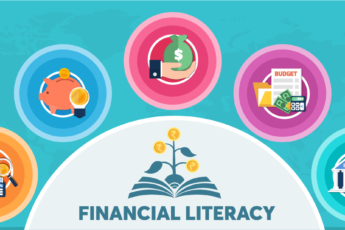Safety And Digital Learning

Technology advances have swept through every sphere, be it entertainment, business, or even education. The current generation is more technologically inclined than ever, having access to knowledge and tools at their fingertips. This lean towards a digital revolution is especially endorsed by India, which is said to be a flag-bearer in percolating digitisation through to the grassroots level.
Why We Talk About Digital Safety, Especially In Education
The pandemic has driven a widespread transition towards e-learning and edutech, leaving young minds wide open to the vast expanse of the online world. The flipside of this is the challenge of monitoring online activities, with curious young minds sometimes going down unfortunate paths. While the digital learning space is a treasure trove of information and connection to peers, they also do pose certain challenges that could hinder learning.
Square Panda’s Tips To Keep Young Learners Safe Online

1) Learn About Digital Safety:
As an early learning stakeholder (parent, early years’ educator, etc.) who is in charge of shaping young minds, you need to learn the basics of online safety before imparting knowledge about digital safety. Some common safety measures include:
- setting up the device with appropriate safety measures, like a firewall, antivirus protection, and security updates before handing it to children,
- vetting all the apps and edutech tools yourself before they find their way into a child’s hands, and
- ensuring digital learning labs are in an area where you can keep an eye on the children at all times.
2) Teach Children About Digital Literacy And Its Dangers:
Even with all the care you take, there is no guarantee of complete protection. In this event, safeguard children against online risks by guiding them about netiquette and the threats they could face. In particular, children should know about:
- Links: Never click links coming in from any source without permission. Teach children not to click on links on any app or tool (for example, WhatsApp, SMS, emails, and more). These could be phishing links.
- Stranger Danger: Just like they are not supposed to speak to strangers in real life, children should be taught not to interact with strangers online too.
- Divulging Personal Information: Young children often do not understand personal boundaries, revealing important personal information like home addresses or family vacation plans online. Children should be made aware of the dangers of giving out too much personal information about themselves and their families on any online space, even to people they know.
3) Allow Open Communication:
Create an environment where children can freely come and talk to you about whatever it is they are learning or experiencing online.
4) Teach Them Digitally, But Offline:
Digital learning doesn’t mean children study online all the time. Some early education platforms provide offline access to their content, study materials, and even educational games. Schools and homes can utilise this feature whenever possible to limit internet exposure.
How Square Panda India Is Making Digital Learning Safe
Digital learning is the future (read our thoughts about it, and AI, here), and we at Square Panda India are making sure our programs under the Aarambh initiative, especially our foundational learning program, are safe for young children.
As our core impact group is so young (Square Panda India’s initiative aims to impact children between the ages of two and eight), we make sure to control every aspect of our cloud-based digital system. The digital part of our foundational program runs in a closed environment without any extra ads or purchases interrupting the child’s learning. Strict internal data safety rules protect all participants’ information gathered during this process to the highest degree possible. With each educational game an individual child plays, data on their progress is collected, and reports are generated for the parents/teachers, viewable inside the Square Panda Playground. Our adaptive AI software inside the Square Panda platform only uses its learnings to recommend what content is to be shown to the early learners, for optimal learning outcomes.
Digital learning promises to unite India, share information like never before, and turn the tide for socio-economic prosperity in our nation. However, digital education needs to be supported by online safety for a truly holistic and integrated educational experience. The need of the hour are policies and instruments that ensure accessible and safe early childhood education for every Indian child.
What are your thoughts on digital learning and safety? Let us know in the comments below.
Stay updated and follow us:
Facebook – https://www.facebook.com/SquarepandaSquarePandaIndia/
Twitter – https://twitter.com/squarepanda_edu
LinkedIn – https://www.linkedin.com/company/square-panda-in
Instagram – https://instagram.com/squarepanda.india
YouTube – https://youtube.com/channel/UCaN_P-_l30Rd0FmsGrhQLrQ




Leave a Comment